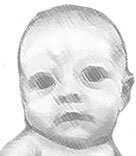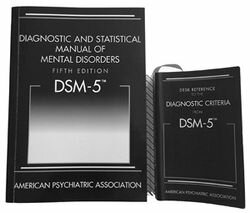Attachment styles and reactive attachment disorder

Attachment describes disorders of mood, behavior, and social relationships arising from a failure to form an ideal relationship with a primary caregiver in early childhood. The process is complex involving chemistry, neurology and perhaps dissociative boundaries or brain damage. There are researchers that have devoted years of study to the behavior of child - caregiver interaction. One of the original studies is the Mary Ainsworth study, which used 12-month old infants and put them through set scenarios with their primary caregiver. The infant's that were said to have a secure attachment were disturbed when their primary caregiver left the exam room, then were secure enough to explore their surroundings after the caregiver left them. Upon the primary caregivers return, they were joyful and acknowledged their caregiver and then continued to explore their environment. Attachment styles have been shown to remain fairly consistent throughout life. [1] [2]
The brain - mind confusion applies to attachment styles that are not secure. These are not a disorders, according to the DSM-5, but are disrupting and lead to other disorders such as posttraumatic stress disorder (PTSD), other specified dissociative disorder (OSDD), and dissociative identity disorder (DID). Understanding attachment styles is imperative for the comprehension of advanced disturbances. [1] [2]
Contents
Secure attachment
In almost all cases the primary caregiver has a secure attachment style, and they are able to mirror this to their infant. Even in cases where one parent does not have a secure attachment, the secure attachments seems to be passed on to the child no matter which caregiver is with the child most often. Of interest, the child is confused when the caregiver without the secure attachment is with them, but it does not stop them from developing the parts of their mind and brain that are necessary for them to exhibit the behavior patterns that other infants and children do that have obtained a secure attachment. [1] [2]
Avoidant attachment
Studies reveal the behavior of children grouped into this category to have a disturbed attachment with their primary caregivers, but findings show that rarely are these children abused in a literal sense of the word. The parent could be mentally ill, or there could be raising their child amidst disturbing environmental conditions that are affecting the perceived relationship between the child and its caregivers. The primary caregiver could have dissociative identity disorder, or even other specified dissociative disorder and the child literally does not know who their caregiver is moment to moment. They are confused. If a child is unable to seek out a safe person, then their mind cannot calm. A lack of calming results in brain - mind miscommunication, and although there are is more than one thought on this, the newest and brightest is that it is literally the neurons of the hippocampus that are affected and not the mind. Another excellent idea is that it is the mind that is affected. Ellert Nijenhuis (2014) believes that when an infant is unable to obtain a secure attachment with a primary caregiver then a dissociative boundary, much like what is seen following structural dissociation, will persist. Whether it's the mind or the brain, or even both that are affected the result is an anxious person. Due to the confusion in their "head" they are triggered easily and respond with visually active responses such as nail biting, fidgeting, bouncing from one foot to the other when standing and so on. The individual is often, but not always, visually anxious. [1] [2]
Disorganized attachment
Children who researchers group into this category have been subjected to child abuse according to most top researchers. Upon observation a child in this grouping is agitated when their primary caregiver is in an exam room with them. Their reactions are confused then the caregiver leaves the room, but are rarely distressed. Usually they show joy, wariness or mistrust. Once in a while a child shows no emotion and these children seem to be the most disturbed. While the caregiver is gone from the room, the child relaxes as much as they appear to be capable of, but still appear wary. Upon return of the caregiver the child is always distressed, but they never overtly show it. Instead the infants look confused; some infants will approach their caregiver, but then stop, turn around and even fall to the ground and don't appear to know what to do. Researchers believe this is because they desperately need an attachment figure, but their primary caregiver is a source of fear. These children are apprehensive in response to their caregivers, and their lack of trust is obvious to researchers. The same child does not exhibit the mistrust when a stranger wants to comfort them or even an adult they have come to know does. Their confusion is in response to their caregiver only. [1] [2]
Diagnostic manuals
Diagnostic manuals like the DSM and ICD are not meant to be used to understand any mental disorder. [3]:19 Their intent is to give the minimum criteria needed to diagnose a disorder. The criteria listed here is paraphrased.

The Diagnostic and Statistical Manual of Mental Disorders (DSM-5), was released to the public May 27, 2013. [3]
| Reactive attachment disorder 313.89 |
|---|
| A child is distressed or unable to comfort in the presence of their primary caregiver. |
| Social situations are avoided, and fearful emotions are exhibited when the primary caregiver is in the proximity. |
| A child has been unable to establish a warm and welcoming bond with one consistent adult in their life. (Note: This is not in the DSM-5, but it's possible that one adult is present, but that person has floridAn organization that has been voted down by other experts, because it mixes many disorders together. {{Rp|419}} dissociative identity disorder, which confuses the child and the result if the same as not having a consistent nurturing caregiver. |
| The individual does not have autism spectrum disorder, is at least 9 months in development, and the disturbance began prior to 5 years old age. |
| There are two specifiers. Note if it's been persistent for 12 months or more, and specificity the current severity. |
References
- ^ a b c d e Leo, Giuseppe (2014) (coauthors: David Mann, Georg Northoff, Allan N Schore, Robert Stickgold, Bessel A Van Der Kolk, Grigoris Vaslamatzis, Matthew P Walker). Psychoanalysis and Neuroscience. 10: 8897479065.
- ^ a b c d e Siegel, Daniel (2012). . Guilford press. 13: 978-1462503902.
- ^ a b American Psychiatric Association, (2013). . APA..


